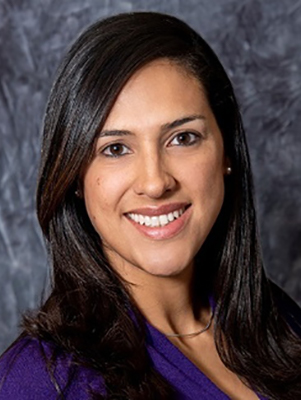
Minimally invasive procedure gives young patient with epilepsy a safe, effective, and quick surgical option
Liam Kruggel (pictured above) is a sturdy nine-year-old. He likes driving four-wheelers and helping his dad on their farm near Good Thunder, MN. Until recently, Liam suffered from what’s known as medically refractory epilepsy.
When he was 10 months old, Liam had what his father, Jason, described as a 10 to 15-minute febrile seizure caused by a spike in his body temperature. “It was the worst day of my life because we didn’t understand what was happening to him,” said Jason. “We took him to urgent care in Mankato, and they told us he had a cold and a bit of a fever. They sent us home where he started convulsing, so we went right back to the emergency room. He had another seizure about 12 months later and then had nothing for years.”
1,000-yard stare
When he turned five, however, Liam started having regular seizures. “He never had what I would describe as a grand mal seizure; instead, he would go into a 1,000-yard stare,” explained Jason. “He seemed coherent through the entire thing…he knew something was happening, but he couldn’t move.”

Because Liam wasn’t responding to the antiseizure medications his physician had prescribed, he was referred to a new care team at U of M Fairview Masonic Children’s Hospital that included pediatric neurosurgeon Carolina Sandoval (pictured at left), MD. “At some point with medically refractory epilepsy, no matter how many medications you add, they don’t really seem to help,” she explained. “And the more you increase the doses, the higher the side effects, so this limits your therapeutic options.”
Effects on cognition and development
Antiseizure medication can affect cognition and brain development, according to Dr. Sandoval. “Childhood is when most of your brain development occurs,” she said. “Anything that hampers the child’s ability to get the most out of their learning years creates a big impact.”
Liam’s neurologist at Masonic Children’s did a thorough workup that included imaging and four days’ worth of EEG recordings to pinpoint the region in the brain that was the focus of his seizures – a lesion created by his original febrile seizure. “This kind of situation gives us a high chance of success, when we are able to locate a region responsible for the seizures and can offer a surgical alternative for destroying this abnormal area,” said Dr. Sandoval.
Behavioral arrest

The location of Liam’s lesion also affected the kind of seizures he had. “Different regions in the brain give rise to different kinds of seizures,” said Dr. Sandoval. “Liam’s were known as behavioral arrest seizures. In addition to limiting his overall ability to move and curtailing his ability to speak, his arm and hand on the left side would move, and his head would deviate to the left.”
After Dr. Sandoval discussed Liam’s case during M Health Fairview’s multidisciplinary epilepsy conference and considered the diagnostic evidence, she gave Jason two surgical options: a traditional and more invasive approach (removing a portion of Liam’s skull to get at the area causing the problems) or a newer and less invasive option (drilling a half-inch burr hole in the skull through which to insert a thin probe into the area). Jason chose the less invasive option.
Minimal disruption
This approach, called laser ablation, involves using a small laser probe that is inserted through the burr hole and delivers heat precisely to cause damage in the desired area of the brain. “It creates minimal disruption to surrounding brain tissue,” Dr. Sandoval noted. “And with magnetic resonance thermography, we can evaluate the damage we cause to a specific area of the brain in real time.” All of this results in shorter surgeries and shorter hospital stays compared to open craniotomies and more invasive surgeries.
Cutting-edge technology
Dr. Sandoval collaborated with neurosurgery colleague Robert McGovern, MD, to plan and perform the procedure. It was done in the U’s state-of-the-art T-suite, complete with intraoperative MRI. They also used ROSA, a robotic platform designed to help surgeons plan and perform complex neurosurgical procedures in a minimally invasive manner.
“There was very little impact on Liam,” said Jason. “He was released from the hospital the day after the procedure and his recovery was relatively quick. We just had to keep the incision site clean.”
Seizure-free
“Liam is doing really well,” added Dr. Sandoval. “He’s also been able to wean off some of his medications. The last time I saw him, he had been seizure free.”
Overall, Jason admits that while it was a scary situation, “You have to follow your gut and trust your doctors,” he said. “People who are going through it, understand it.”
Dr. Sandoval believes that the U of M is the best place for Liam to have had this kind of procedure. “We have the technology and the expertise, both in pediatric and adult neurosurgery,” she said. “We’ve done this procedure numerous times and the intraoperative MRI enables us to do it safely and efficiently.”



